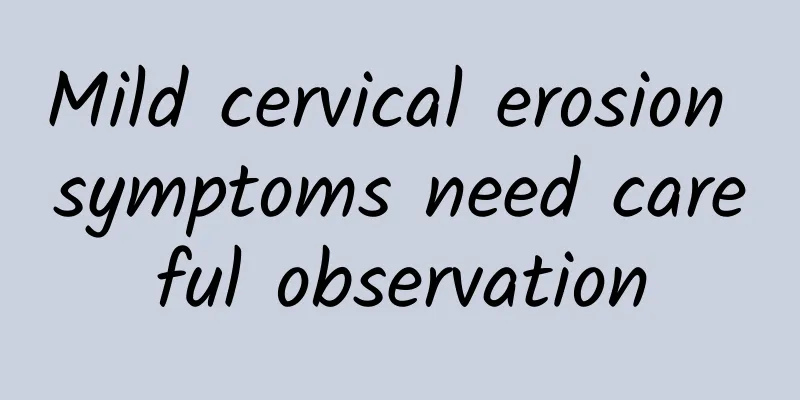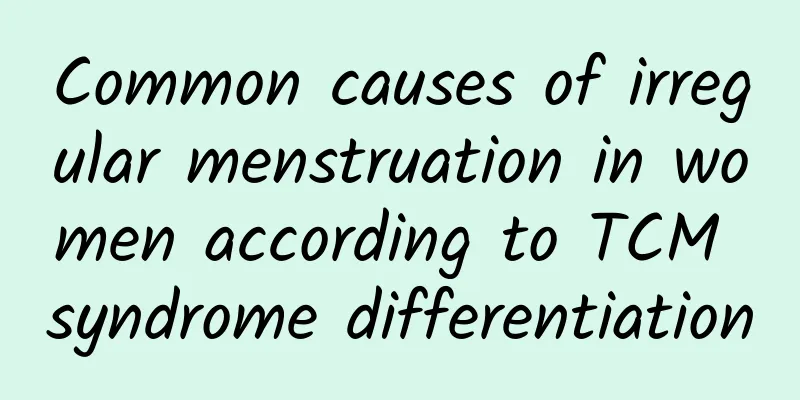Hospital for women with dysmenorrhea

|
When we talk about dysmenorrhea, I believe all women understand that the disease has a high incidence rate and is difficult to treat. However, many people who suffer from this disease do not actively seek treatment, thinking that such a problem is normal. This idea is wrong. Dysmenorrhea can be effectively treated, but you have to go to a regular tertiary hospital. Large hospitals have certain guarantees. There are also many ways to treat dysmenorrhea, such as: General treatment Mental counseling: Especially for girls who have just started menstruation, we should patiently provide them with general medical and health knowledge, and explain that "menstruation" is a physiological phenomenon of girls' gradual development and maturation. Some physiological reactions such as lower abdominal distension and slight backache are normal. When menstrual blood flows out smoothly, the symptoms will disappear quickly. For those with primary dysmenorrhea, the symptoms will disappear naturally after multiple menstruations or childbirth. For example, applying hot compresses to the lower abdomen can relieve the symptoms when there is pain in the lower abdomen. Drug treatment 1. Analgesics, sedatives, and antispasmodics Codeine is analgesic, salicylates are antipyretic and analgesic, chlorpromazine is sedative, and anti-catecholamine drugs block catecholamine receptors and inhibit the peripheral parasympathetic nervous system. 2. Oral contraceptives Combination therapy of estrogen and progesterone in oral contraceptives, taking ethinyl estradiol and norethindrone progesterone daily for 20 to 22 days can inhibit ovulation. Ethinyl estradiol plus norethindrone can also be used once a day for 20 to 22 days to achieve the purpose of inhibiting ovulation and eliminating dysmenorrhea. 3. Prostaglandin antagonists Indomethacin suppository is a prostaglandin antagonist; applying it once a day before and during menstruation can reduce uterine activity, decrease the frequency of uterine contractions, reduce intrauterine pressure, and significantly relieve pain, mainly by antagonizing the secretion of prostaglandins. Patients with dysmenorrhea must go to a regular tertiary hospital for treatment. This has been introduced in the above content, as well as an introduction to the treatment methods for dysmenorrhea. I hope it can help everyone. |
<<: How much does Chinese medicine for dysmenorrhea cost?
>>: Symptoms of bilateral ovarian cysts
Recommend
Gynecological diseases What are the complications of ovarian cysts? Four major complications need to be prevented
Ovarian cysts can occur at any age, but the oldes...
What is the specific cause of cervicitis?
Among gynecological diseases, cervicitis is one o...
Six effective ways to prevent cervical hypertrophy
How to effectively prevent cervical hypertrophy? ...
Will cervical warts recur?
Cervical warts are a highly contagious sexually t...
What causes ovulation bleeding?
Ovulation bleeding refers to vaginal bleeding dur...
What are the causes of uterine fibroids? What will happen if uterine fibroids are not treated for a long time?
Uterine fibroids are a common gynecological disea...
History of ectopic pregnancy is one of the causes of ectopic pregnancy in women
I believe many patients want to know the cause of...
How much does ectopic pregnancy surgery cost? From several thousand yuan to tens of thousands of yuan
Once an ectopic pregnancy is discovered, it needs...
What are the effects of chronic cervicitis in women? The three major hazards of chronic cervicitis in women should be known
Cervicitis is the most common gynecological disea...
Cupping treatment for patients with kidney deficiency type menstrual disorders
Kidney deficiency type menstrual disorders are ma...
What are the symptoms of vaginitis in pregnant women?
There are many classifications of vaginitis, such...
People should always pay attention to the causes of vaginitis
At present, the incidence of vaginitis is getting...
How to prevent cervical warts in women
Cervical warts are becoming increasingly prevalen...
Steaming grapefruit to nourish the stomach and moisten dryness in autumn helps reduce fat
The weather turns cooler in autumn, and if you ea...
Causes of pelvic effusion
Pelvic effusion is a female-specific disease, whi...









